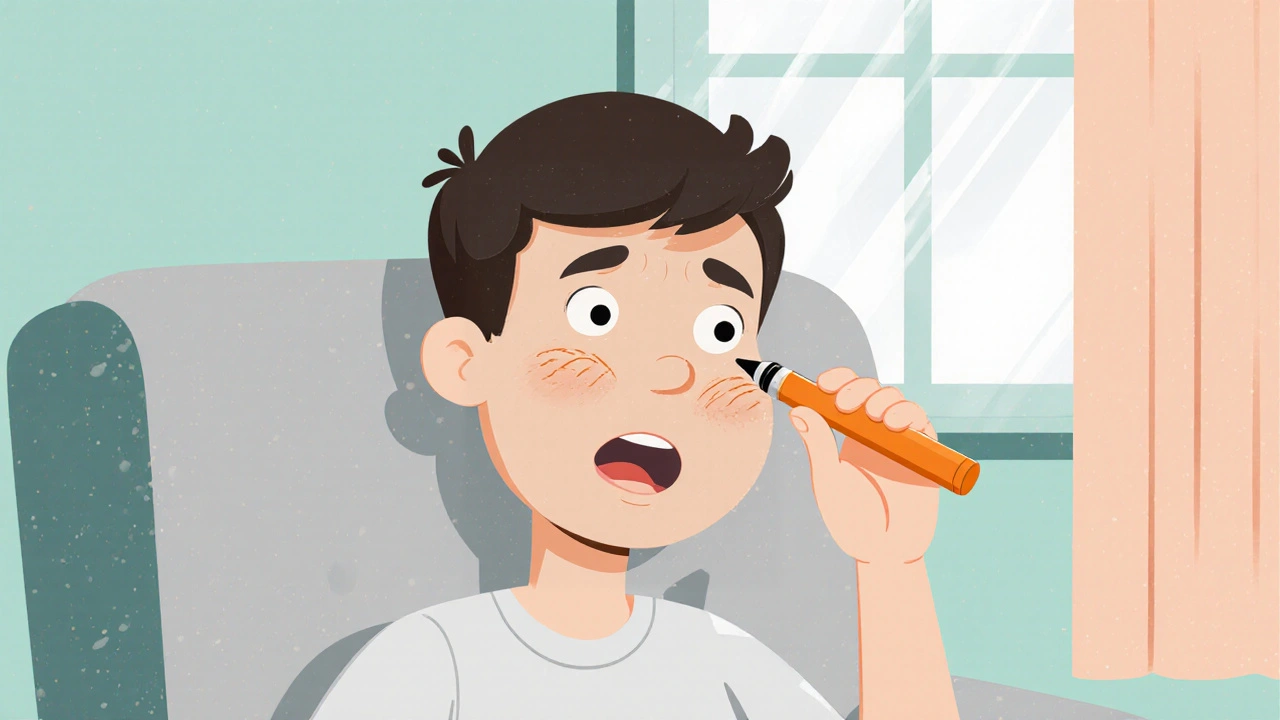When working with Steroid acne treatment, the approach to clear breakouts caused by steroid use. Also known as steroid‑induced acne therapy, it helps people who notice new pimples after taking corticosteroids or anabolic steroids.
Why do these drugs spark acne? Both types of steroids can raise sebum production, alter skin cell turnover, and shift the hormone balance that feeds the bacteria behind pimples. In short, the skin’s oil glands get a boost, and the clogged pores become a breeding ground. If you’ve never seen this link before, ask yourself: have you started a new prescription and then woke up with a rash of whiteheads? That’s the classic pattern.
First, don’t panic and stop the steroid without talking to your doctor. Cutting medication abruptly can cause serious side effects. Instead, ask your prescriber about dose adjustments, alternate routes, or a tapering schedule. Most physicians will agree that a gradual reduction, when possible, reduces the skin flare while keeping the primary condition under control.
Second, add a proven topical weapon. Topical antibiotics like clindamycin or erytromycin cut the bacterial load, while benzoyl peroxide kills the bugs and dries excess oil. Using them together—one in the morning, the other at night—creates a two‑step barrier that tackles both causes and symptoms.
Third, think about oral support. Low‑dose isotretinoin is the heavyweight champion for stubborn cases, but it requires blood work and strict birth‑control rules for women. If isotretinoin feels too aggressive, a short course of oral doxycycline or minocycline can calm inflammation without the long‑term commitment.
Fourth, adopt skin‑friendly habits. Wash twice daily with a gentle, non‑scrubbing cleanser, avoid heavy moisturizers, and skip picking at lesions. A lightweight, oil‑free sunscreen protects the skin barrier while you treat the flare.
Mastering steroid acne treatment means fewer scars, less embarrassment, and a smoother road back to your regular routine. The right mix of medication tweaks, topical allies, and lifestyle habits creates a solid defense against future breakouts.
What about diet? While the science isn’t crystal clear, many people notice that high‑glycemic foods, dairy, and excess sugar can worsen acne. Swapping sugary drinks for water, choosing whole grains, and adding omega‑3 rich foods (like salmon or walnuts) may help keep the oil glands calm.
Finally, keep an eye on skin changes throughout your steroid course. Documenting the timing of new spots, their location, and any products you add gives your dermatologist a clear picture. That way, any adjustment—whether a lower dose, a different topical, or an added oral medication—can be fine‑tuned quickly.
Below you’ll find a curated list of articles that dig deeper into each of these points. From how fenticonazole fights fungal skin issues to the pros and cons of oral antibiotics, the collection offers practical guidance you can apply right away.
